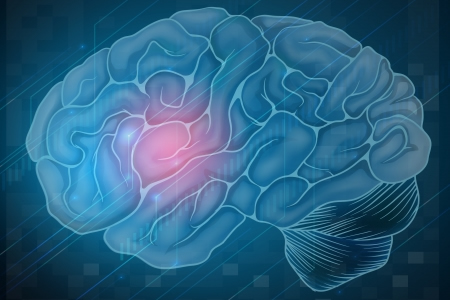New research suggests that following a brain injury, the healing process that sees new brain cells generated to replace damaged cells could make the development of glioblastoma more likely.
Glioblastoma is the most aggressive form of cancer that starts in the brain, and one of the most difficult forms of brain cancer to treat in adults. There are limited treatment options available to patients, and treatment often fails. Following diagnosis, the average lifespan is only 15 months.
The research was conducted by a team of researchers at the University of Toronto, the Hospital for Sick Children, and the Princess Margaret Cancer Centre. Previous studies had shown that glioblastomas have diverse cell populations, and that this heterogeneity is likely responsible for treatment failure.
Rare glioblastoma stem cells are responsible for driving both tumor initiation and recurrence after treatment. The latest study sought to characterize the diversity of GSCs using single-cell RNA sequencing and machine learning techniques and involved mapping the makeup of GSCs cultured from 26 patients. More than 70,000 cells were analyzed for the study to determine which genes were switched on in each of the cells.
The researchers found considerable disease heterogeneity. Each tumor contained multiple subpopulations of cancer cells that are molecularly distinct. While therapies can be provided to wipe out the GSCs, they are not effective at killing all the different subclones. In order to find a treatment that is effective at killing all the different subpopulations of GSCs, it was first necessary to explore the molecular nature of the cells.
“We observed a high degree of inter- and intra-GSC transcriptional heterogeneity that could not be fully explained by DNA somatic alterations,” explained the researchers in the paper. “Instead, we found that GSCs mapped along a transcriptional gradient spanning two cellular states reminiscent of normal neural development and inflammatory wound response.”
The discovery of cellular states linked to the normal healing process suggests mutations occur during normal tissue healing which leads to the development of a glioblastoma, which may be many years after the injury has occurred. The tumor starts as one mutant cell that keeps growing because the normal controls that prevent growth do not work.
“Glioblastoma can be thought of as a wound that never stops healing. We’re excited about what this tells us about how cancer originates and grows, and it opens up entirely new ideas about treatment by focusing on the injury and inflammation response,” said Peter Dirks, MD, PhD, Head of the Division of Neurosurgery and Senior Scientist in the Developmental and Stem Cell Biology program at the Hospital for Sick Children.
Further experiments determined the two different cellular states of the cells were vulnerable to different gene knockouts and revealed several potential therapeutic targets which had not previously been considered. The researchers also found that the comingling of the different cell states was patient specific and tended to be biased to either the developmental or injury response cellular state. Therapies should therefore be developed to target both the developmental and inflammatory cellular states.
The researchers are now searching for drugs that are effective at targeting different points on the gradient between both states. An effective therapy could then be developed using a cocktail of drugs that target the cellular states specific to each patient and would wipe out more than one cancer stem cell subclone simultaneously.
You can about the research in the paper – Gradient of Developmental and Injury Response transcriptional states defines functional vulnerabilities underpinning glioblastoma heterogeneity – which was recently published in the Nature Cancer. DOI: 10.1038/s43018-020-00154-9
